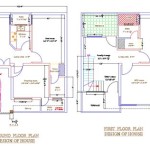Historic Plantation Homes in the Louisiana Purchase
The Louisiana Purchase, encompassing vast territories acquired by the United States from France in 1803, played a pivotal role in shaping the country's history. Amidst the sprawling lands, numerous historic plantation homes stand as testament to an era marked by agriculture, wealth, and cultural diversity.
Architectural Legacy
Plantation homes in the Louisiana Purchase reflect a rich architectural heritage, blending elements of French, Spanish, and American styles. Many feature distinctive features such as:
- Quadrangle Courtyards: Open-air courtyards surrounded by buildings, providing a sense of privacy and protection.
- Raised Porches: Wraparound verandas offering expansive views and protection from the elements.
- Hip Roofs: Sloping roofs with multiple sides, adding visual interest and providing attic space.
Economic Significance
Plantations played a vital role in the economy of the Louisiana Purchase. They were primarily focused on agricultural production, with crops such as cotton, sugar, and rice being major cash sources. The labor force consisted mainly of enslaved people of African descent, whose contributions to the plantation system cannot be overstated.
The economic prosperity of plantations allowed for the construction of elaborate homes, showcasing the wealth and influence of their owners. These homes often served as centers of social and political activity, hosting gatherings and events that shaped the region's history.
Social Stratification
Plantation homes were not merely architectural wonders; they also reflected the deep-rooted social stratification of the era. The grand mansions belonged to the plantation owners, who occupied the highest ranks of society. Meanwhile, the enslaved people who worked on the plantations lived in simple dwellings, often referred to as "slave quarters" or "slave cabins," located in separate areas of the property.
This social divide was evident not only in the physical separation between living spaces but also in the legal and social limitations imposed on enslaved people, highlighting the stark inequalities that existed during this period.
Historical Preservation
Today, many historic plantation homes in the Louisiana Purchase have been meticulously preserved, offering a glimpse into a bygone era. They have been transformed into museums, historic sites, and event venues, providing opportunities for education, tourism, and cultural appreciation.
By preserving these structures, we not only celebrate their architectural and historical significance but also confront the complexities of the past and its impact on the present. These homes serve as reminders of the diverse forces that have shaped the United States, including the legacy of slavery, the struggle for equality, and the resilience of human spirit.
Visiting Historic Plantation Homes
Visiting historic plantation homes in the Louisiana Purchase is an enriching experience that offers a deeper understanding of American history and culture. Many homes are open to the public, offering guided tours that provide insights into their architecture, history, and the lives of those who lived and worked on them.
By embracing the opportunity to explore these historic landmarks, we can appreciate their beauty, learn about their past, and gain a greater appreciation for the complexities that have shaped our present.

Houmas House Plantation Know Louisiana Cultural Vistas

Historic Louisiana Plantation To Be Auctioned

Plantations In Louisiana New Orleans Company

14 Historic Plantations In Louisiana

Plantation Tours Near New Orleans Oak Alley Restaurant Inn

Destrehan Plantation Wikipedia

For Plantation Built In 1793 Untouched Since 04 Complete With Rich History Original Beams Fireplaces News Nola Com

Rosedown The Manor Home Of A Lucrative Cotton Plantation Built In 1835 By Daniel And Martha Turnbull Library Congress

Reliving Louisiana History Nottoway Plantation Bayoutravel

Plantations In Louisiana New Orleans Company








